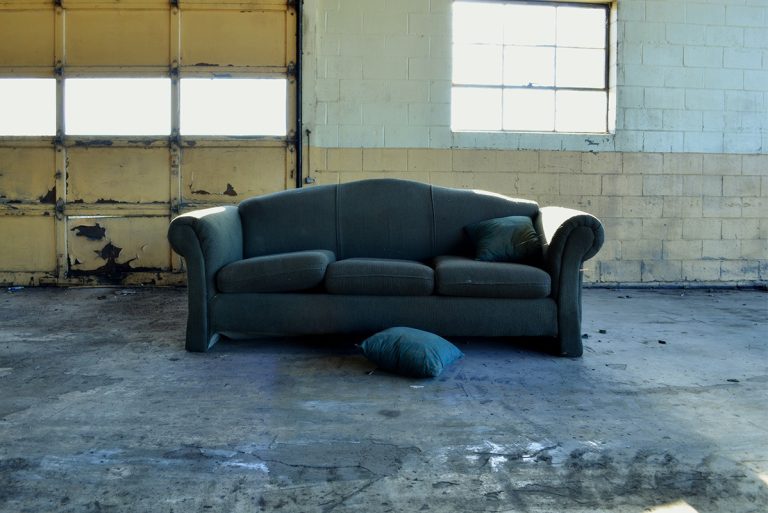Have you considered reclaimed wood as an eco-building material for your sustainable home? It’s never been easier to find and use seasoned, solid wood in search of a new home and purpose.
The general trend toward sustainability, provoked by our climate crisis, has also increased the popularity of reclaimed wood today.
In fact, if you don’t get in on the reclaimed bandwagon soon, it may all be gone. A new generation of sustainable farmers who — instead of merely reclaiming old wood — wishes to return falling-apart barns to their original use through reconstruction.
Here you’ll discover everything you need to get started on your own journey into buying and building with reclaimed wood. Plus, you’ll learn what to avoid when it comes to this as-of-yet largely untapped sustainable building material.
What is reclaimed wood?
Wood that has outgrown its initial function — either through age, use, neglect, or abandonment — but has been repurposed into something else in a different location and with a new role, is called reclaimed wood.
In other words, it’s wood that has been given a second chance at life. Salvaged wood is another term for reclaimed wood.
There are countless types and sources of reclaimed wood. For instance, reclaimed wood from felled logs hulled up from the bottoms of rivers, originally placed there during the pioneer days in U.S. history, is the most intact, dense wood with extraordinary length and width you can find today.
When discovered, these almost entirely unprocessed logs are like an underwater goldmine. Each one could be four hundred or more years old.

Other common sources of reclaimed wood include train tracks, utility poles, shipyards, bridges, warehouses, pallets, barns, bowling alleys, railroad cars, horse stables, factories, fences, demolition sites, etc.
Reclaimed wood is a perfect example of an upcycled product. It’s material destined for the landfill or incinerator, but spared that fate in its “new and improved” capacity.
What’s the difference between reclaimed wood and recycled wood?
Anyone aiming for a greener lifestyle these days has heard of the 3Rs of waste management:
- Reduce
- Reuse
- Recycle
Using this terminology, reclaimed wood is old wood from any number of tree species being reused in new ways. It will have retained many of its original characteristics and authentic qualities (color, thickness, tree ring patterns, grain, density, shadow lines, patina, texture, etc.) in its new role.
Old wood that’s been ground up into chips and used as animal bedding or to make particle board (wood chips pressed and glued together) is recycled wood. This wood does not resemble what it once was before recycling.
Is reclaimed wood as good as regular lumber?
There’s no doubt that reclaimed wood that’s old growth, solid, strong, and insect- and disease-free certainly beats the many types of wood boards used today for home building in the United States.
Its sheer heaviness betrays its irreplaceability.
Lumber for sale commercially today for home and office buildings is usually composed of layers (like thin sheets) of wood glued together with cancer-causing petrochemicals such as formaldehyde. Lumber is harvested from young tree plantations.

Source: Wikimedia
It’s light and airy. Not something I’d want to be in during a hurricane, would you?
Being so new, lumber hasn’t been exposed to real-world conditions like extreme heat or strong storms. Because it’s not climate-resistant, lumber is more prone to warping and other damage than reclaimed wood.
By contrast, reclaimed wood has been weathered to the max. For example, it has survived harsh winds, high and low temperature fluctuations, intense sun, and pounding rain. Do you think you’ll be putting it through more than that? Probably not!
But, given the ravaging effects of our climate crisis, you never know what’s in store for tomorrow. Better to be prepared now than sorry later.
That is, if you’re still inclined to build with wood these days. Some experts advocate for steel-framed buildings today since they can more easily resist wildfire and other extreme weather events than wood.
But, if your heart’s set on reclaimed wood for its quality or character — or both — when you can find it, grab it before it’s gone. Know that it’s decades- or centuries-old and plenty durable simply because it has withstood the test of time.
Plus, it has a unique, old-fashioned charm — call it quirkiness — that today’s lumber lacks. With it in your home, you’ll have an interesting story to tell visitors about the living history behind your eco-friendly home. Reclaimed wood will add a rustic touch to your interior design that will leave guests impressed and maybe even envious.

Source: Wikimedia / John M.
It’s more than easy to switch out lumber and put it reclaimed wood in any aspect of sustainable home building or renovation. You do not need to support the commercial lumber industry at all.
Reclaimed wood works well wherever lumber is used, including:
- Flooring
- Beams
- Rafters
- Posts
- Shelving
- Cabinets
- Decking
- Siding
- Window and door casings
- Furniture
- Interior design
Why should I choose reclaimed wood over commercial lumber?
When you choose reclaimed wood that has been certified and guaranteed by a professional to be durable and healthy instead of commercial lumber, you are making a truly sustainable decision on many levels.
The major reasons why choosing reclaimed wood is more sustainable are:
1. Minimizes deforestation
Forests are naturally excellent carbon sinks. This means they absorb carbon emissions that, when in the atmosphere, contribute to our spiraling climate emergency.
However, this process gets reversed when forests are cut down due to logging or clearcutting to raise animal feed or graze cattle. Then forests become carbon emitters and instead contribute to increasing carbon dioxide in the atmosphere.
Choosing reclaimed wood to practice sustainable living means that you haven’t directly supported any recent climate-destroying logging. Kudos to you!
2. Reduces natural resource consumption
Sustainable living means reusing as much as possible of what already exists instead of buying “new” stuff. This lifestyle is based on reducing the natural resource (water, land, energy, etc.) consumption inherent in the production of all consumer goods.
So each time you choose reclaimed wood instead of commercial lumber, you’re decreasing buyer demand for more virgin lumber. Think of purchasing reclaimed wood as a way you can “stand for trees.”
Although it’s true that the lumber manufacturing process doesn’t require a lot of energy inputs compared to other building materials, it’s still considerable. Using reclaimed wood shifts the responsibility for energy consumption needed to make lumber (which generates the same greenhouse gases as all internal combustion engines) entirely away from you.
Pat yourself on the back.
3. Lessens environmental hazards from toxic chemicals used in lumber production
Sustainable products are those that do not require fossil fuel-based chemicals during manufacture. Anything derived from fossil fuels is non-renewable, and, so, by definition, cannot be sustainable.
Several fossil fuel-sourced chemicals, known as volatile organic chemicals (VOCs), are needed as adhesives and wood coatings in lumber production. Some of these, such as formaldehyde which is a major lumber industry chemical, are cancer-causing.
Other chemicals used to produce some types of lumber, like chromated copper arsenate (CCA), are also carcinogenic. Although banned in 2003 for residential uses (like in playground equipment or backyard decks), CCA is still widely used in the lumber industry.
Lumber treated with CCA or similar toxics easily leaches the chemicals into soil or water, creating public health hazards.
4. Diverts large quantities of useful materials away from landfills or incinerators
The United States, like most of the world, is literally drowning in its trash. Landfills, called “unsustainable forms of waste management” by some experts, are filling up fast. They are also leaching harmful chemicals into water, land, and air.
Skies are filled with pollution from incineration of harmful chemicals like those used in the lumber industry.
Choosing reclaimed wood over lumber diverts what otherwise would have gone to a landfill or incinerator into a second life in your eco-conscious home. That’s good news!
Can reclaimed wood be toxic?
Unfortunately, there are some potential shortcomings to watch out for when deciding to invest in reclaimed wood. Many of these involve toxins, both natural and human-made.
Independent, reliable testing is very important before you repurpose the wood product, to determine if these toxins are present. This is true especially if you intend to use the wood inside your home or near land on which you intend to grow food or source potable water.
The major toxins in reclaimed wood include:
- Mycotoxins (from fungi)
- Cell components (from bacteria)
- Mold spores
- Lead (if painted)
- Arsenic (if pre-treated wood)
- Coal-derived creosote (with or without added coal tar)
- Coal-derived Pentachlorophenol
The first three are biological contaminants that may not be readily visible. They could also remain hidden in the interior of the wood.
Lead was common in paints until the late 1970s in the United States. Even if there is no visible paint on the wood, lead dust could still lurk within.

The latter three are some of the most common chemicals used to preserve wood in the U.S, especially in earlier decades. Although they are not currently permitted for residential purposes, reclaimed wood could possess some of them as contaminants.
When selecting your reclaimed wood, pay special attention to these likely sources for each of them:
- Train tracks (coal creosote)
- Utility poles (pentachlorophenol)
- Pallets (arsenic)
Sometimes when you purchase reclaimed wood you will be able to tell on sight where it came from. Always err on the side of caution when in doubt. Knowing the landowner from whom you’re planning to buy or the age and location of the structure will help you make a more prudent decision. Always seek out a professional opinion and do your own testing as needed.
Buyer’s Tip: If you purchase some reclaimed wood from a non-certified dealer and you plan to work with it yourself, you may wish to run it over first with a portable metal detector. This way, you’ll be able to remove all screws, fasteners, and connectors. Unless, of course, they add to the wood’s charm and you wish to preserve it as is!
Where can I buy reclaimed wood?
There are numerous ways to buy reclaimed wood. Here are some of the most promising.
1. Scout around your neighborhood. Ask questions.
Driving by a demolition site, recycling center, or in a rural area will inevitably turn up multiple opportunities. Be quick and investigate! You may be able to score a big find with little effort and minimal cost.
Contact your local county offices for a list of structures in your area slated for demolition.
There are thousands (if not millions) of abandoned structures still standing after hundreds of years in the United States. Just think: The dilapidated barn or grain mill built in 1700 that you pass every day was likely constructed with trees dating from 1500 or earlier!
Wouldn’t that reclaimed wood — that lived as a sapling 400+ years ago — just dazzle your home decor? That’s some real history for you!
Clues to look for reclaimed wood damage in abandoned structures
If you’re considering purchasing wood from an abandoned structure in your area, but can determine little about the history of the wood, there are several clues to look for that will provide important information.
- Visible decay (isolated or widespread)
- Water stains (old or new)
- Insect infestation
- Areas around the structure showing poor drainage
- Vegetation around or adjacent to wood
If you’re not sure about how to interpret these clues, seek a professional’s opinion before buying.
By investing in reclaimed wood, not only are you receiving a solid and strong piece of the past, you’re taking a tidbit of history into the 21st century by preserving it for posterity with only a new twist added to it.
2. Local reclaimed wood dealers
There is a growing number of professionals around the country who specialize in reclaimed wood. They usually both buy and sell. This means they have a lot of expertise when it comes to assessing wood quality, analyzing it, and optimizing its ability to meet your needs.
They may also pre-cut wood to suit your specific needs (for example, beams of a certain thickness and length from a particular species of a certain age range).
However, this also means that although you’ll be getting a product you can trust, dealers are more expensive than what you may happen upon at Amazon, Craigslist, eBay or Etsy.
The best advice is to visit their showrooms and get to know the people who stand behind the wood. Building a working relationship with them will also serve you well for future reclaimed wood projects. Once you fall in love with reclaimed wood, you may not be able to stop at just one!
Look particularly for dealers who will guarantee their work. Not all treat reclaimed wood to kiln-drying (versus air-drying), but this process will add great value (as well as cost) to the final product. Not to mention it will kill off any insect eggs or larvae and reduce the moisture content (preventing further disfiguration) of the wood.
Running it through the milling process for further clean up is also a very time-consuming, meticulous — not to mention dangerous — task. But a good woodworker proud of their craftsmanship wouldn’t think to skimp on this step.
Here’s a partial list of some reclaimed wood dealers in the United States. Even if they’re not in your state, they may still do business with you. Give them a call! If they can’t help, they may be able to direct you to a dealer closer to you.
- Real Antique Wood (New Jersey)
- All American Reclaim (Illinois)
- Evolutia (Louisiana)
- Longleaf Lumber (Massachusetts)
- WiseWood (Kentucky)
- Old Texas Wood (Texas)
- Rhinewood (Washington state)
- Vintage Timberworks (California)
3. Architectural salvage stores
Sustainability enthusiasts interested in creating a totally eco-friendly abode may be searching for — along with reclaimed wood — other nuts and bolts that make up a home, all of which give it a unique feel and make it, well, a home. Things including:
- Antique bathroom and lighting fixtures
- Classic hardware
- Stained glass
For all the bells and whistles plus reclaimed wood, visit a directory of architectural salvage stores at Old House Online. You may just get lucky and locate precisely what you’ve been searching for to enhance your interior design crafted around reclaimed everything.
A special shout-out in the reclaimed world goes to the Rebuild Exchange, a nonprofit with a mission to help both people and planet since 2009.
How much does reclaimed wood cost?
Pricing of reclaimed wood varies widely from dealer to dealer and wood type to wood type, but you can count on paying significantly more for it than your standard, run-of-the-mill lumber.
It depends on many factors, such as tree species and age. But also the work involved in removing nails and screws as well as extracting it from some hard-to-reach locations is highly labor-intensive. Plus the kiln-drying and milling processes, if done.
It all adds up.
It’s possible to find exceptions in all things, and this is true in the case of reclaimed wood. For example, depending on tree species and how much prepping the reclaimed wood received, a floor using reclaimed wood could be half as much as a brand new one.
Or, then again, it could be twice as much. (I’ve seen both outcomes reported on the internet.)
To put numbers to it, in general, reclaimed wood starts from $5-$12/sq. ft. and works itself on up. Pricing schemes are usually very detailed and elaborate. You’ll need to be familiar with a range of woodworking terms to understand them. Or just ask questions.
However, prices for reclaimed wood could go as high as $20-$40/sq. ft. depending on tree species, wood quality, and quantity. Ask around to find out the latest prices and compare.
Main points on buying reclaimed wood
Although trees are a renewable resource, the fast pace of new construction means that there are greater numbers of tree farms producing virgin wood for building materials. This lumber is not as climate-resistant, nor as strong and solid, as reclaimed wood is.
The more sustainable wood is reclaimed wood. It requires no deforestation. It diverts perfectly usable wood products away from heading to a landfill or incinerator.
There are several ways to find and purchase reclaimed wood. The major ones include area dealers, local contacts, and architectural salvage stores.














